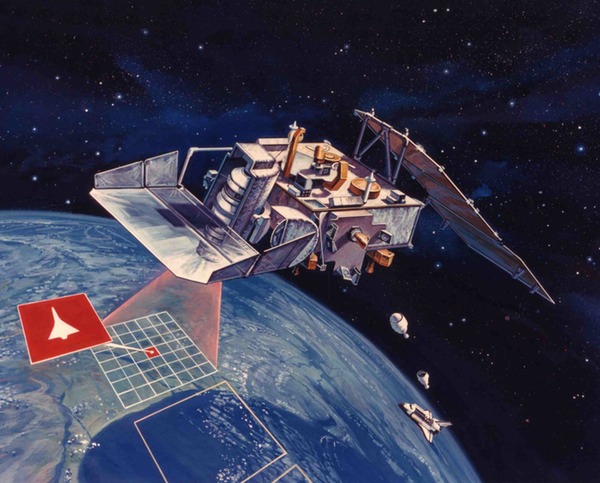I'm not the first person to suggest it. Most of the discussion about the theory revolves around the fact that the X-37 isn't in an ideal orbit to spy on the Tiangong-1. Something I rarely see mentioned, however, is that the X-37 has a payload bay and if you want to put a satellite in there, there's nothing stopping you. Let's take your dimensions, 'cuz I like 'em. 8' by what, 4' diameter? Obviously, you don't need to shove the entire third stage of a Thor-Agena in the payload bay of an X-37. But you could fit... lots of fun in a 4x8 payload bay, particularly if you're already in, you know, orbit. Frankly? I'd build a good'n'proper 2000mm f/2.8 telephoto lense and leave the rest of it for tracking. There's probably a million and one instruments you can hang off of a spying-on-satellites satellite, particularly if nobody knows it's there. Patent US5345238 You probably know more about this than I do, and frankly, if you can find a link you'd be doing me a favor. All mention of it appears to have dropped off the face of the earth. Used to be the Air Force published a "meteor flare database" or something; basically, a data dump of all the infrared hot spots that SBIRS detected. Then one fine day in 2008 or 2009, they classified the data. Then in 2010, the X-37 flew... and nobody could triangulate that wonderful public-domain infrared flare data to figure out where our buddy with the payload bay was going. Ring any bells?
Teal Ruby was a technology experiment to test new IR sensors for early warning satellites. Originally named P80-1 until December 1983 when it was renamed AFP-888 and its launch date became classified. It has essentially a rectangular parallelepiped shape and approximate dimensions 2.4 × 2.4 × 0.7 m. The spacecraft is three-axis stabilized to maintain one 2.4 × 2.4 m surface vector pointing at the nadir. The spacecraft serves as a stable platform reference for three experiment telescopes. The spacecraft telemetry capability is PCM and it uses onboard tape recorders with up to 6 hours storage.

